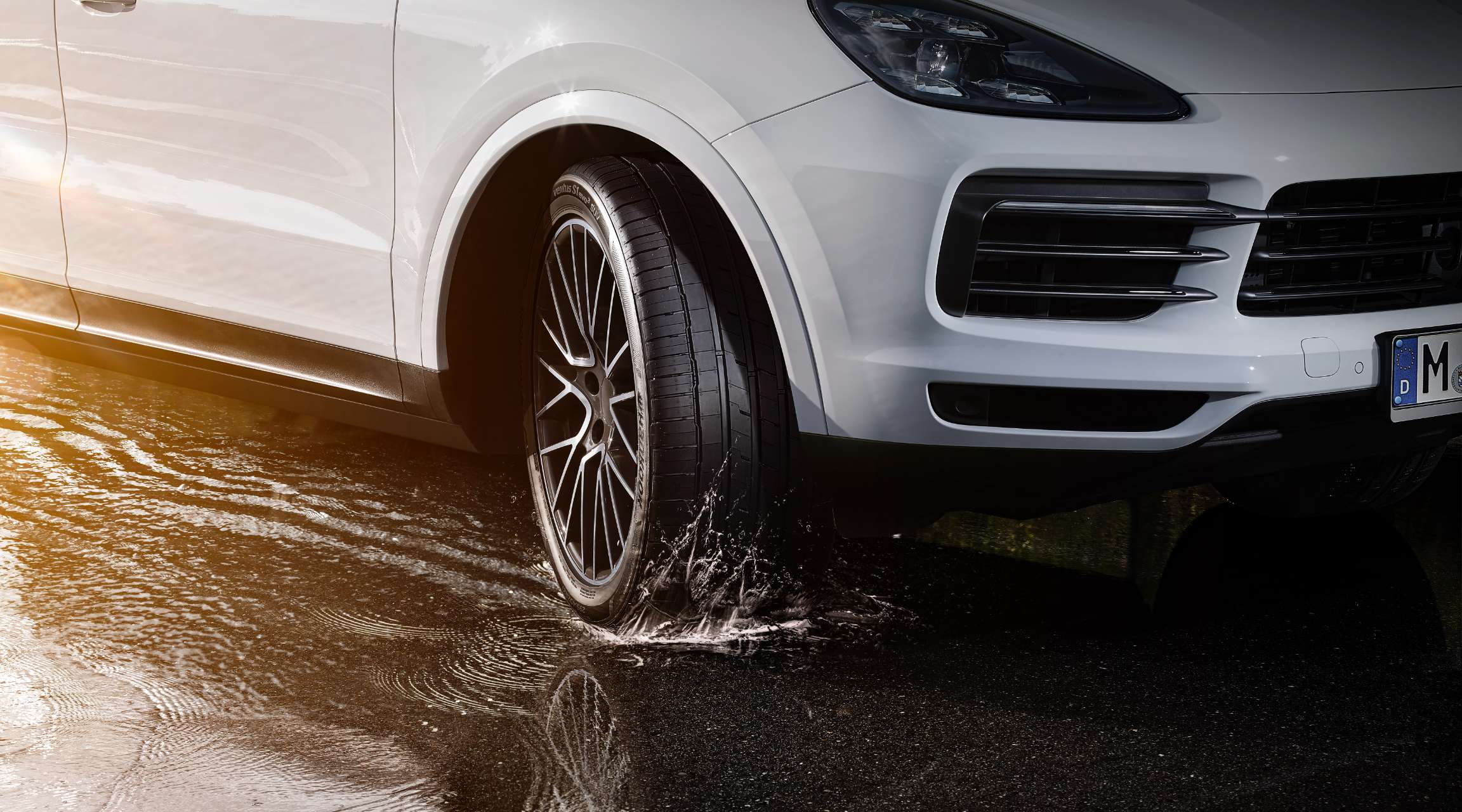
Driving Tips
Wet Driving
Your tyres handling performance, braking power and drainage become more critical in the rain. Learn about the dangers of driving on wet surfaces and some of the precautions you can take to enhance safety.

Challenges of Driving on Wet Surfaces
-
Because the accident rate for wet driving is just as high as for snow driving, drivers must be aware of the risks of wet driving for safety purposes.
A variety of abnormal conditions can occur when driving on wet roads; for example, the tyre can hydroplane on the water’s surface, causing a momentary loss of direction. Grip is also weakened when driving on snowy roads so braking distance is increased.
Safety Precautions
-
Tyres with heavy wear are at a disadvantage for wet driving. Be sure to check tyre wear regularly and especially before long journeys.
-
Reduce driving speed just before turning and while turning remain at a constant speed.
-
If you lose control of your vehicle while maneuvering in wet conditions, try to remain calm and avoid any sudden braking or acceleration. Instead, ease off of the accelerator while allowing the vehicle to regain grip. You can then make small corrections to your direction in order to regain control.

